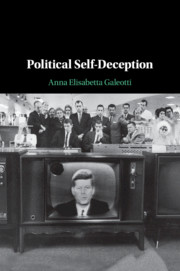Book contents
- Political Self-Deception
- Political Self-Deception
- Copyright page
- Dedication
- Epigraph
- Contents
- Acknowledgments
- Introduction
- Part I The Philosophy of Self-Deception
- Part II Self-Deception in Politics
- Chapter 3 The Self-Deception of Political Leaders, Officials, and Governments
- Chapter 4 Kennedy and Cuba
- Chapter 5 Johnson and the Gulf of Tonkin Resolution
- Chapter 6 Bush and the Weapons of Mass Destruction
- Conclusion
- References
- Index
Chapter 6 - Bush and the Weapons of Mass Destruction
from Part II - Self-Deception in Politics
Published online by Cambridge University Press: 24 August 2018
- Political Self-Deception
- Political Self-Deception
- Copyright page
- Dedication
- Epigraph
- Contents
- Acknowledgments
- Introduction
- Part I The Philosophy of Self-Deception
- Part II Self-Deception in Politics
- Chapter 3 The Self-Deception of Political Leaders, Officials, and Governments
- Chapter 4 Kennedy and Cuba
- Chapter 5 Johnson and the Gulf of Tonkin Resolution
- Chapter 6 Bush and the Weapons of Mass Destruction
- Conclusion
- References
- Index
Summary
- Type
- Chapter
- Information
- Political Self-Deception , pp. 189 - 233Publisher: Cambridge University PressPrint publication year: 2018
- 2
- Cited by



